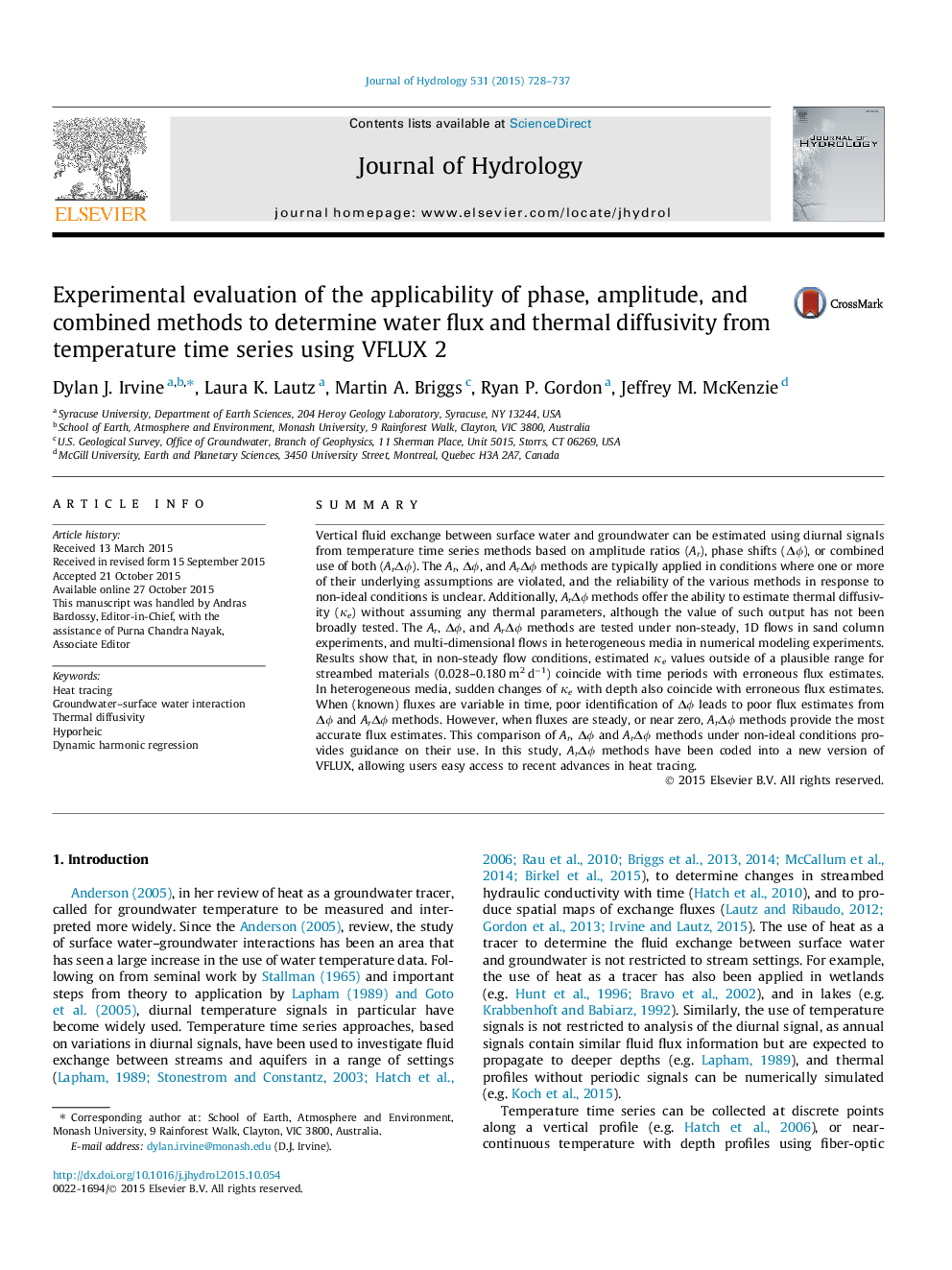| Article ID | Journal | Published Year | Pages | File Type |
|---|---|---|---|---|
| 6409834 | Journal of Hydrology | 2015 | 10 Pages |
Abstract
Vertical fluid exchange between surface water and groundwater can be estimated using diurnal signals from temperature time series methods based on amplitude ratios (Ar), phase shifts (ÎÏ), or combined use of both (ArÎÏ). The Ar, ÎÏ, and ArÎÏ methods are typically applied in conditions where one or more of their underlying assumptions are violated, and the reliability of the various methods in response to non-ideal conditions is unclear. Additionally, ArÎÏ methods offer the ability to estimate thermal diffusivity (κe) without assuming any thermal parameters, although the value of such output has not been broadly tested. The Ar, ÎÏ, and ArÎÏ methods are tested under non-steady, 1D flows in sand column experiments, and multi-dimensional flows in heterogeneous media in numerical modeling experiments. Results show that, in non-steady flow conditions, estimated κe values outside of a plausible range for streambed materials (0.028-0.180 m2 dâ1) coincide with time periods with erroneous flux estimates. In heterogeneous media, sudden changes of κe with depth also coincide with erroneous flux estimates. When (known) fluxes are variable in time, poor identification of ÎÏ leads to poor flux estimates from ÎÏ and ArÎÏ methods. However, when fluxes are steady, or near zero, ArÎÏ methods provide the most accurate flux estimates. This comparison of Ar, ÎÏ and ArÎÏ methods under non-ideal conditions provides guidance on their use. In this study, ArÎÏ methods have been coded into a new version of VFLUX, allowing users easy access to recent advances in heat tracing.
Keywords
Related Topics
Physical Sciences and Engineering
Earth and Planetary Sciences
Earth-Surface Processes
Authors
Dylan J. Irvine, Laura K. Lautz, Martin A. Briggs, Ryan P. Gordon, Jeffrey M. McKenzie,
